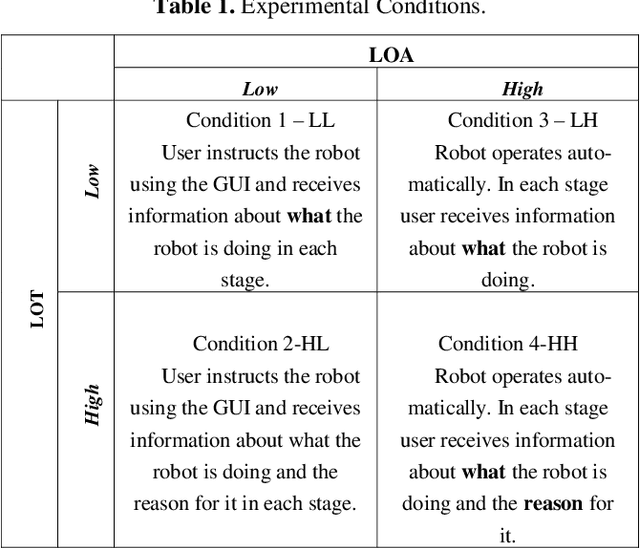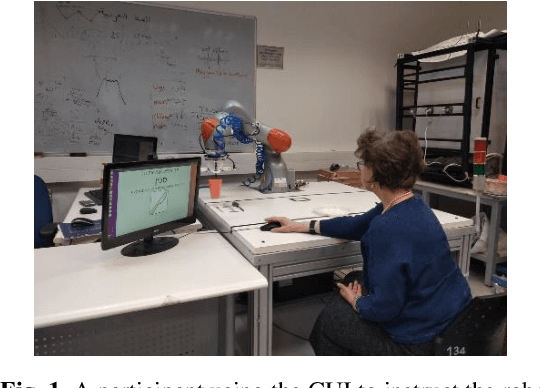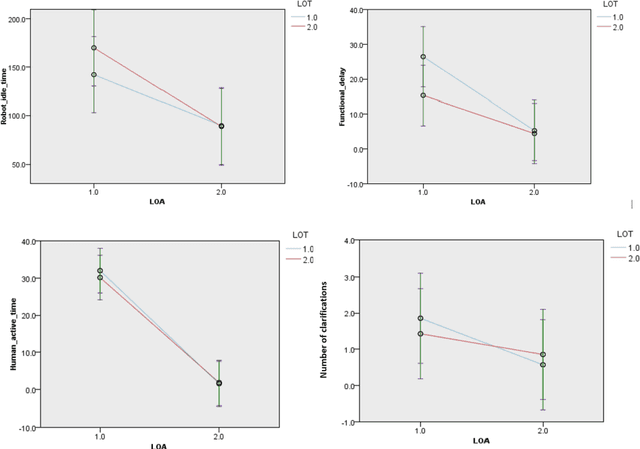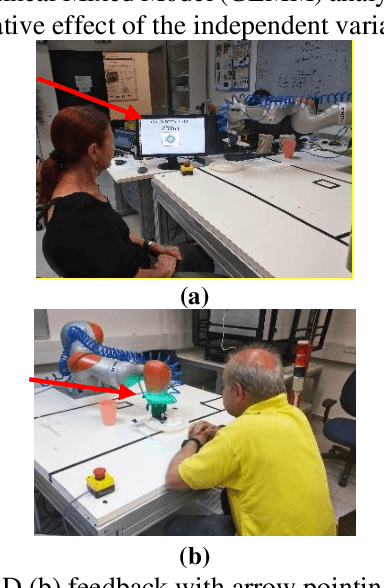Shay Givati
Improving the interaction of Older Adults with Socially Assistive Robots for Table setting
Mar 24, 2021


Abstract:This study provides user-studies aimed at exploring factors influencing the interaction between older adults and a robotic table setting assistant. The in-fluence of the level of automation (LOA) and level of transparency (LOT) on the quality of the interaction was considered. Results revealed that the interaction effect of LOA and LOT significantly influenced the interaction. A lower LOA which required the user to control some of the actions of the robot influenced the older adults to participate more in the interaction when the LOT was low com-pared to situations with higher LOT (more information) and higher LOA (more robot autonomy). Even though the higher LOA influenced more fluency in the interaction, the lower LOA encouraged a more collaborative form of interaction which is a priority in the design of robotic aids for older adult users. The results provide some insights into shared control designs which accommodates the preferences of the older adult users as they interact with robotic aids such as the table setting robot used in this study.
Feedback modalities for a table setting robot assistant for elder care
Mar 15, 2021
Abstract:The interaction of Older adults with robots requires effective feedback to keep them aware of the state of the interaction for optimum interaction quality. This study examines the effect of different feedback modalities in a table setting robot assistant for elder care. Two different feedback modalities (visual and auditory) and their combination were evaluated for three complexity levels. The visual feedback included the use of LEDs and a GUI screen. The auditory feedback included alerts (beeps) and verbal commands. The results revealed that the quality of interaction was influenced mainly by the feedback modality, and complexity had less influence. The verbal feedback was significantly preferable and increased the involvement of the participants during the experiment. The combination of LED lights and verbal commands increased participants' understanding contributing to the quality of interaction.
 Add to Chrome
Add to Chrome Add to Firefox
Add to Firefox Add to Edge
Add to Edge